
How to Use SHT31: Examples, Pinouts, and Specs
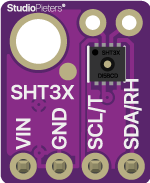
 Design with SHT31 in Cirkit Designer
Design with SHT31 in Cirkit DesignerIntroduction
The SHT31 is a high-accuracy digital humidity and temperature sensor designed and manufactured by Sensirion. It offers excellent performance and a wide range of features, making it ideal for advanced consumer products, industrial systems, and Internet of Things (IoT) applications. Its precision and reliability are well-suited for environmental monitoring, weather stations, smart home automation, and HVAC systems.
Explore Projects Built with SHT31
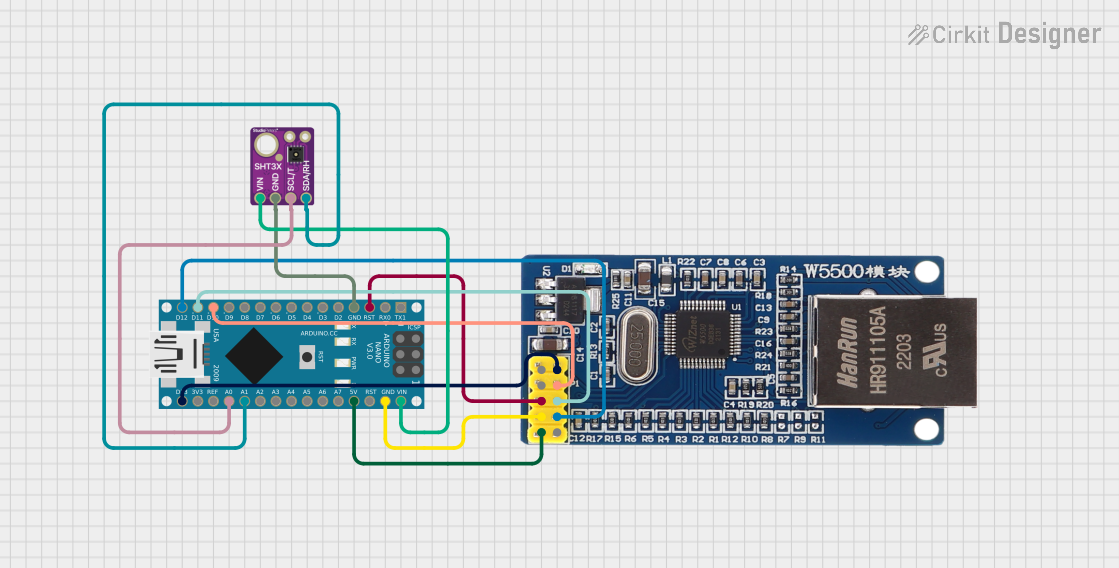
 Open Project in Cirkit Designer
Open Project in Cirkit Designer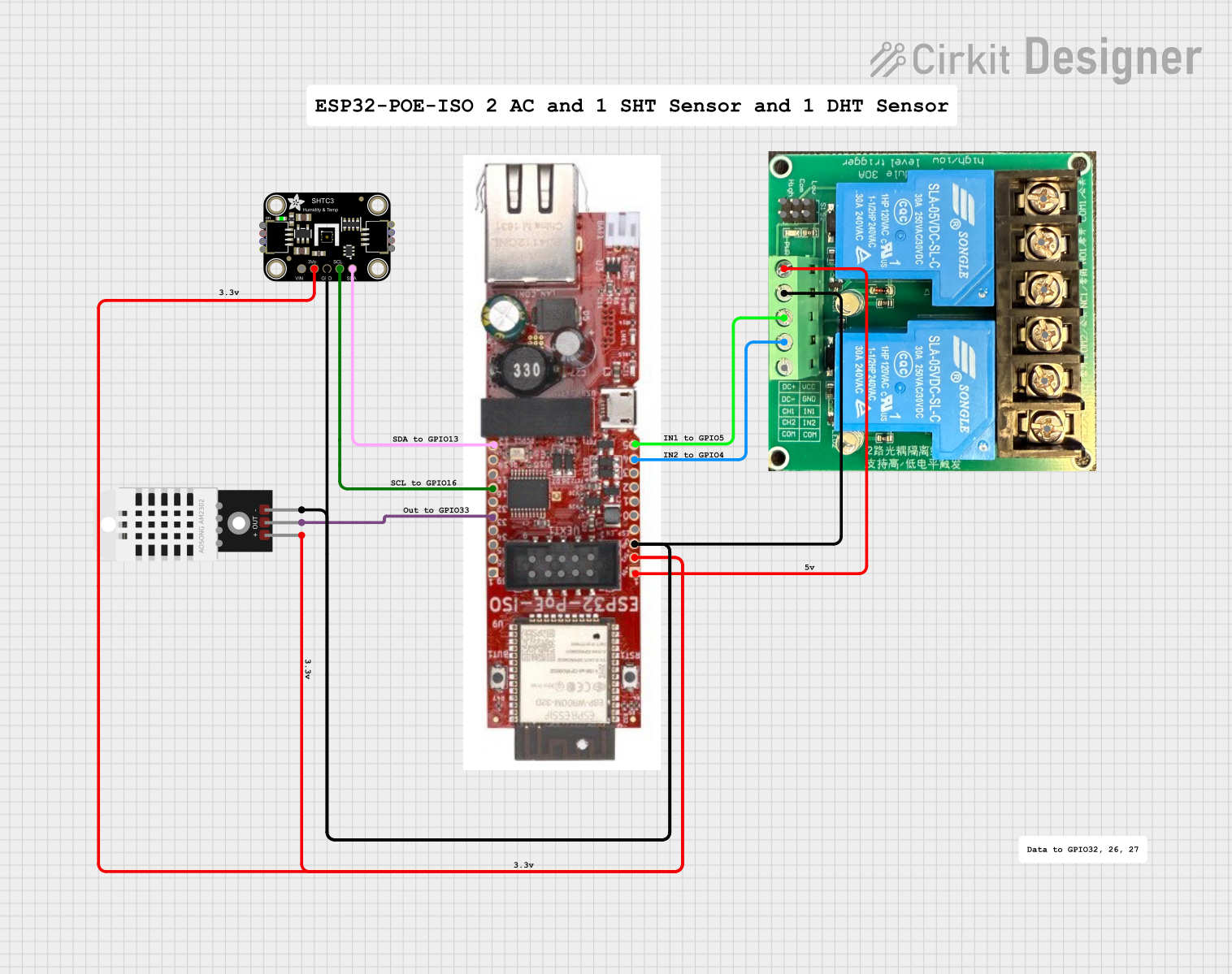
 Open Project in Cirkit Designer
Open Project in Cirkit Designer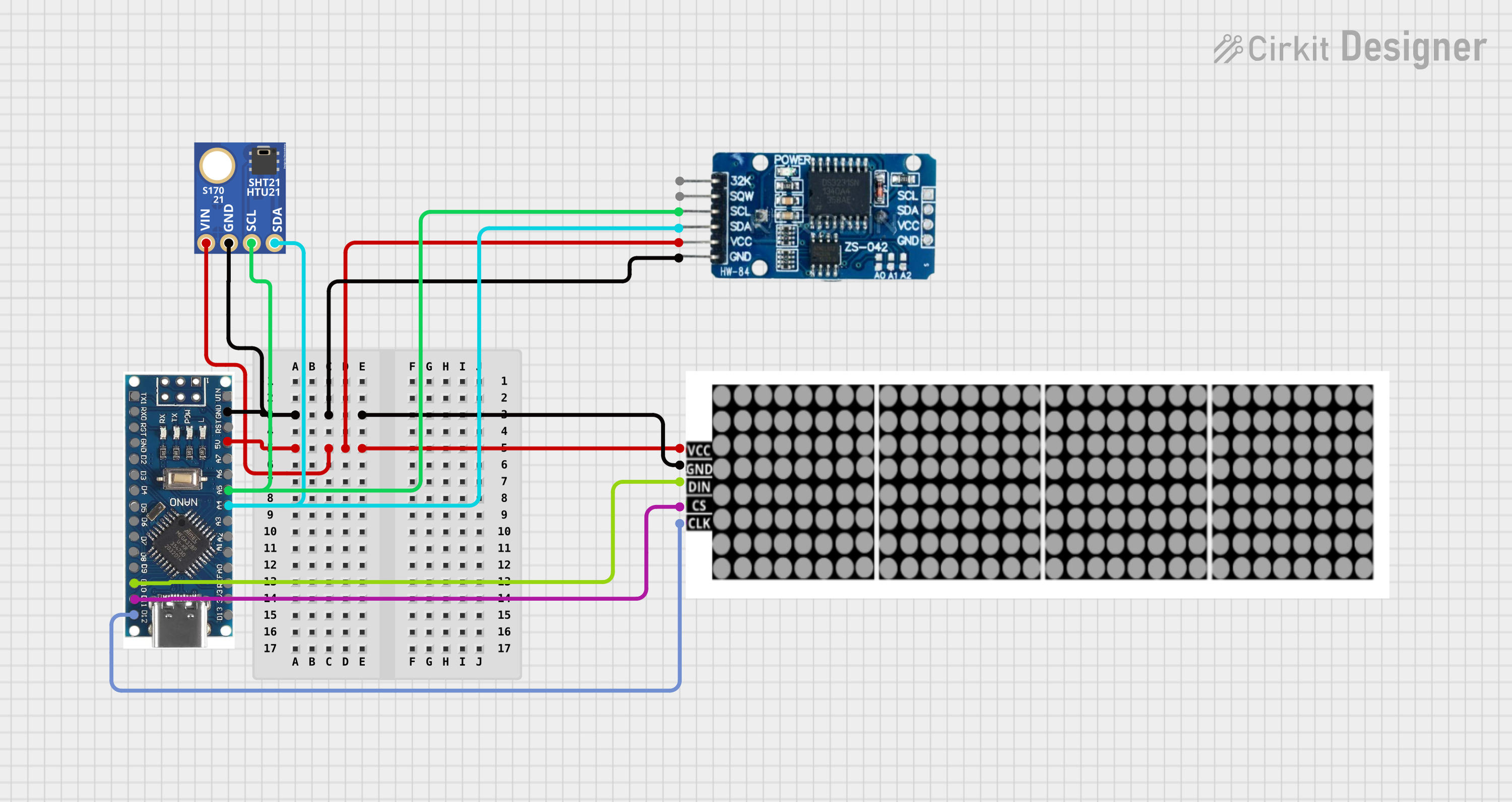
 Open Project in Cirkit Designer
Open Project in Cirkit Designer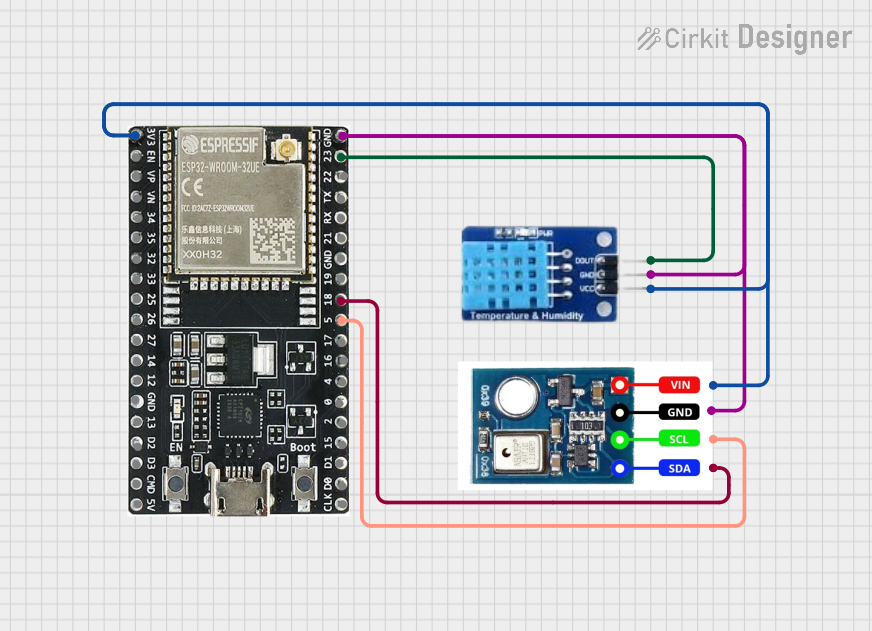
 Open Project in Cirkit Designer
Open Project in Cirkit DesignerExplore Projects Built with SHT31

 Open Project in Cirkit Designer
Open Project in Cirkit Designer
 Open Project in Cirkit Designer
Open Project in Cirkit Designer
 Open Project in Cirkit Designer
Open Project in Cirkit Designer
 Open Project in Cirkit Designer
Open Project in Cirkit DesignerTechnical Specifications
Key Technical Details
- Humidity Measurement Range: 0 to 100% RH
- Temperature Measurement Range: -40°C to +125°C
- Humidity Accuracy: ±2% RH (10 to 90% RH)
- Temperature Accuracy: ±0.3°C
- Supply Voltage Range: 2.4V to 5.5V
- Interface: I2C
- Response Time: < 8 sec (tau63%)
- I2C Address Options: 0x44 (ADDR pin connected to GND) or 0x45 (ADDR pin connected to VDD)
Pin Configuration and Descriptions
| Pin Number | Name | Description |
|---|---|---|
| 1 | VDD | Supply voltage |
| 2 | GND | Ground |
| 3 | SDA | Serial Data Line for I2C |
| 4 | SCL | Serial Clock Line for I2C |
| 5 | nRESET | Active low reset pin |
| 6 | ALERT | Alert pin (optional use) |
| 7 | ADDR | I2C address selection pin |
Usage Instructions
Integration into a Circuit
To use the SHT31 sensor in a circuit:
- Connect the VDD pin to a power supply within the 2.4V to 5.5V range.
- Connect the GND pin to the ground of the power supply.
- Connect the SDA and SCL pins to the I2C data and clock lines, respectively.
- Optionally, connect the nRESET pin to a digital output on your microcontroller if you wish to reset the sensor via software.
- Optionally, use the ALERT pin for system alerts based on humidity and temperature thresholds.
- Set the ADDR pin to either GND or VDD to select the I2C address.
Best Practices
- Ensure that the power supply is stable and within the specified voltage range.
- Use pull-up resistors on the SDA and SCL lines, typically 10kΩ.
- Keep the I2C lines as short as possible to prevent signal degradation.
- Avoid placing the sensor near heat sources or in direct sunlight to prevent false readings.
- Implement proper ESD precautions when handling the sensor.
Example Code for Arduino UNO
#include <Wire.h>
#include "SHT31.h"
SHT31 sht31 = SHT31();
void setup() {
Serial.begin(9600);
Wire.begin();
if (!sht31.begin(0x44)) { // Set to 0x45 if ADDR pin is tied to VDD
Serial.println("Could not find a valid SHT31 sensor, check wiring!");
while (1) delay(1);
}
}
void loop() {
float temp = sht31.getTemperature();
float hum = sht31.getHumidity();
if (!isnan(temp)) { // Check if 'temp' is not an error value
Serial.print("Temp *C = "); Serial.println(temp);
} else {
Serial.println("Failed to read temperature");
}
if (!isnan(hum)) { // Check if 'hum' is not an error value
Serial.print("Hum. % = "); Serial.println(hum);
} else {
Serial.println("Failed to read humidity");
}
delay(1000);
}
Troubleshooting and FAQs
Common Issues
- Sensor not detected: Ensure wiring is correct, pull-up resistors are in place, and the correct I2C address is used in the code.
- Inaccurate readings: Verify the sensor is not exposed to heat sources or direct sunlight. Check for proper airflow around the sensor.
- Unstable readings: Ensure the power supply is stable and within the recommended voltage range.
FAQs
Q: Can the SHT31 sensor be used outdoors? A: Yes, but it should be protected from direct exposure to water and sunlight.
Q: How can I extend the I2C cable length? A: Use shielded cables and lower the pull-up resistor value to maintain signal integrity.
Q: What is the purpose of the ALERT pin? A: The ALERT pin can be used to trigger an interrupt on the host microcontroller when humidity or temperature exceeds programmed limits.
Q: How do I calibrate the sensor? A: The SHT31 is factory-calibrated. However, for critical applications, you may perform additional calibration using known humidity and temperature references.
Q: Is there a sleep mode to reduce power consumption? A: Yes, the SHT31 supports a low-power mode that can be activated via I2C commands.
This documentation provides a comprehensive guide to integrating and using the SHT31 sensor in various applications. For further information, consult the manufacturer's datasheet and application notes.